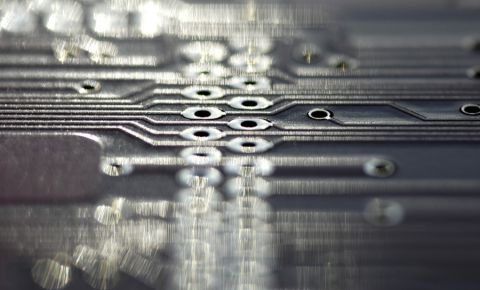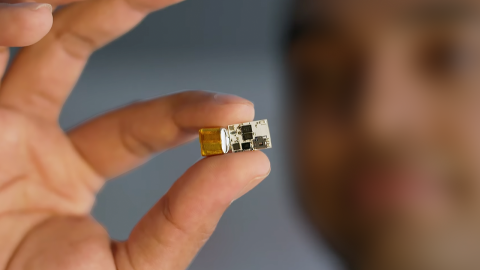DFA Guidelines for an Efficient PCB Design

Every PCB that wants to become a real device will need to be assembled with high yield. Some strategic planning is needed to ensure the board can be assembled correctly on the first go. An understanding of some basic Design for Assembly (DFA) guidelines can help ensure your design passes through manufacturing assembly with minimal defects and no rework.
In this article, we will cover the following points:
- Why is DFA Important in PCB Design?
- Objectives of DFA
- Standardization
- Component Validation
- Reducing Assembly Errors
- DFA standards
- Component Orientation With Polarity Markings
- Spacing Requirements
- IPC Assembly Standards
- Common Assembly Defects
- Tombstoning
- Solder Bridging
- Solder Balls
- Solder Voids
- Inspection Methods
- Automated Optical Inspection (AOI)
- X-ray Inspection
What is Design for Assembly?
Design for Assembly (DFA) in PCBs is a process that consists of three stages. In the first stage, the design of the board layout is taken into consideration. During this stage, clearance between components, the direction of soldering, and cost reduction for assembly are taken into account. In the subsequent stage, Gerbers or ODB++ files are validated for clearances and orientation of components, footprints, and various cleaning methods. In the final stage, wave soldering, reflow soldering, and manual soldering requirements are identified.

Objectives of DFA
Standardization
Every board designer will have a hard time forecasting the challenges that could arise while working on a new PCB design. The main objective of standardization is to minimize the level of uncertainty by using parts and techniques that have worked previously. Below are a couple of ways to ensure maximum standardization in your design:
- Validate each component's source carefully to ensure the authenticity of the components. Unauthorized sources increase the risk of delays, misinformation, and counterfeit parts.
- Try to reduce the number of unique component packages to ease the design for the assembly process and minimize potential errors. For example, if there are any footprint-to-land pattern discrepancies, the necessary layout adjustments will be accomplished more rapidly since the design will have fewer unique land patterns.
Component Validation
One of the primary objectives of DFA is to validate components that go on the board. Follow the guidelines mentioned below to help your manufacturer to efficiently assemble your board:
|
|
|
|
|
|
|
|
|
|
|
|
Reducing Assembly Errors
DFA mainly focuses on eliminating potential assembly errors that may occur. Apart from the points discussed above, the below points enable manufacturers to fabricate circuit boards with the desired functionality.
- Stick to size, spacing, and tolerances for drilled holes that fall within your fabricator’s capabilities. This also ensures the manufacturability of your PCB design.
- Follow clearances and tolerances that are within the capabilities of your CM.
- Follow board edge clearance rules.
- Ensure the board shape allows optimal penalization.
- Incorporate thermal reliefs where necessary.
DFA standards
As discussed in the previous sections, knowing the DFA standards helps you to design a board efficiently and cost-effectively. In this section, we will take you through a few critical DFA norms.
Component Orientation With Polarity Markings
Component orientation is one of the most important factors to be considered during the pre-assembly stage. For a hassle-free assembly, it is essential to follow clear and explicit techniques of orientation. Just as an example, consider diodes, which will have some definite polarity. Make sure the schematic symbol and silkscreen have a proper polarity marking that will be visible after placement. This will make the inspection process easier, and it makes testing or debug easier.

The symbol can be positioned between the two pins for through-hole parts, but it should be placed beside the device for surface-mount parts. Since these symbols can take up a lot of space, a bar above the cathode pad or a simple indication of A (anode) or K (cathode) would suffice for HDI boards.
Always group similar components and try to place them with the same orientation if possible. This facilitates a quick assembly process. For instance, all QFPs can be placed in a row with pin 1 at the same corner for each IC.

Spacing Requirements
Spacing between the components affects the time frame requirements of the PCBA process. In this section, we will have a look at recommended spacing standards to ensure the quality of the assembly process.
Part-to-Edge Spacing
Part-to-edge spacing is the distance from a given component on the board to its edge. This factor plays an important role during depanelization. During this process, the components near the board edge will be subjected to stress that might affect solder joints. We recommend a 125-mils clearance between the board edge and the SMD placed on the top side of the circuit board, but your fabricator might provide different allowances in their process.
Sometimes, manufacturers further increase the component-to-board edge spacing on the lower side of the board. This reduces the possibility of SMT component damage during the application of solder paste.
Copper traces can also be routed closer to the edge of the board. This allows a solder mask gap and prevents pad encroachment. Traces, copper pour, and manually inserted parts must be spaced at least 10-mils from the board's edge. Castellated holes are a type of design that requires copper plating at the board edge. To achieve the desired copper plating, such designs will require additional expense and lead time.

Part-to-Hole Spacing
Part-to-hole spacing should be considered for both vias and through-hole components. It determines the minimum spacing between a component pad/body and the holes. Such spacing consists of two specific factors that must be met in order to achieve a high-quality assembly.
- Part-to-hole wall: This is measured from the actual hole edge to the pad edge. This is also known as drill-to-copper distance. The minimum spacing required is around 8 mils.
- Part-to-annular ring: This is measured from the edge of the hole’s annular ring to the pad edge. The minimum spacing required is around 7 mils.

IPC assembly standards
Here are some of the other IPC assembly standards your CM will stick to while assembling boards.
- IPC-A-600: IPC-A-600, commonly known as IPC-600, specifies the level of acceptance criteria for each product category. It defines the desirable, permissible, and non-negotiable requirements of the boards.
- IPC/WHMA-A-620C: It describes the standard for materials, procedures, tests, and acceptability criteria for cable and harness assemblies.
- IPC-A-630: It defines the standards for electronic enclosures. This standard is employed when your CM assembles and carries out the inspection process.
Common Assembly Defects
This section details the defects and issues that occur most frequently during PCBA. Manufacturers employ many quality control methods to avoid these defects, and some of those methods are mentioned in the subsections below.
Tombstones
A tombstone, also known as the Manhattan effect, refers to the case where an SMD component is partially or entirely peeled off of its landing pad. This is most common in small SMD passives (0603 or smaller packages) and it occurs due to force imbalances during reflow soldering.
Ways to prevent tombstoning:
- Ensure high component accuracy and a high preheat temperature.
- Avoid exposure to high temperatures and humidity.
- Extend the soak zone to balance the wetting force on both pads before the paste reaches the molten state.

Solder Bridging
Solder bridging occurs when the solder is applied between two conductors that should not be electrically connected. These undesired connections are referred to as shorts.
Ways to prevent solder bridges:
- Ensure that the metal content in the solder paste is at least 90%.
- Align the stencil apertures accurately and reduce their size by 10%.
- Secure an appropriate reflow profile.

Solder Balls
Solder balls are the most common defect that occurs during surface-mount assembly. It is the development of tiny spherical particles of solder isolating from the main body which forms the joint. This is a concern for a no-clean process since many solder balls can form a bridge between two adjoining leads. This results in functional issues to the board.
Ways to prevent solder balling:
- Pad sizes and spaces should be designed according to the datasheet.
- Before solder paste printing, bake the board.
- Ensure that the thickness of the hole plating is greater than 25μm, this prevents water trapping.

Solder Voids
Empty spaces or holes inside the solder joint are known as solder voids. A solder void is created when there isn't enough solder available to establish a connection. Solder void typically consists of air.
Ways to prevent solder voiding:
- Increase the outgassing channel, allowing gasses to escape from the board.
- Try to use lead-free solder paste.

Inspection Methods
Once the circuit board is populated, manufacturers may perform multiple inspection and quality control procedures.
Automated optical inspection (AOI)
Automated optical inspection (AOI) is an efficient and accurate method for detecting PCB assembly errors before boards leave the production facility. This method employs high-resolution cameras and advanced image processing software to identify assembly errors such as missing or misplaced components, solder bridges, solder balls, or tombstones.

X-ray Inspection
AXI (automated X-ray inspection) is a popular approach for detecting hidden defects in ICs and BGAs. The scanning source in this system is an X-ray. It can be used to identify huge voids and fractures. This approach allows non-destructive access to interior geometries and structural compositions. AXI captures images in the same way as AOI. The only difference is that AOI scans with a light source, whereas AXI scans with an X-ray.

DFA guidelines are intended to ensure high yield and minimal rework after assembly. You can implement these and many other DFA guidelines before you go to production by using the DRC engine in Altium Designer®. After you consult with your manufacturer, you can program the constraints listed above into your PCB design rules to ensure you can quickly catch and correct errors. Once your design is ready for a thorough design review and manufacturing, your team can share and collaborate in real-time through the Altium 365™ platform. Design teams can use Altium 365 to share manufacturing data and test results, and design changes can be shared through a secure cloud platform and in Altium Designer.
We have only scratched the surface of what’s possible with Altium Designer on Altium 365. Start your free trial of Altium Designer + Altium 365 today. And make sure to visit the Sierra Circuits website to learn more about manufacturing and assembly processes.











